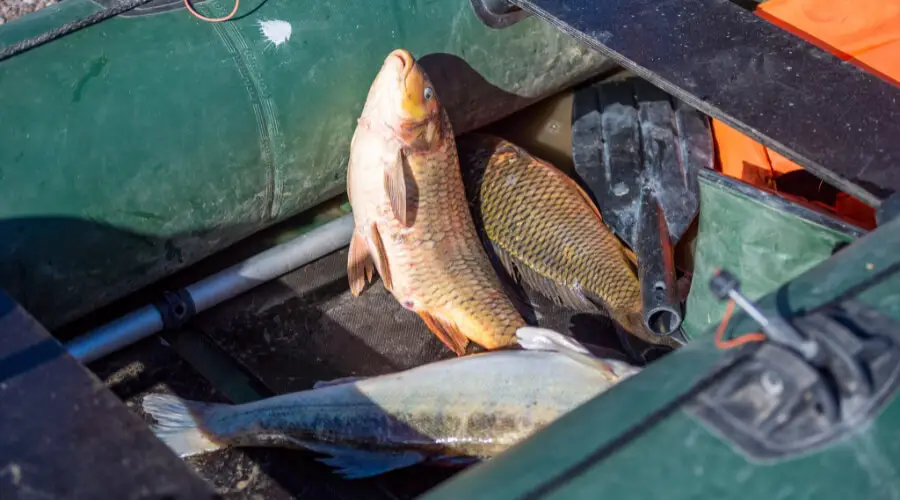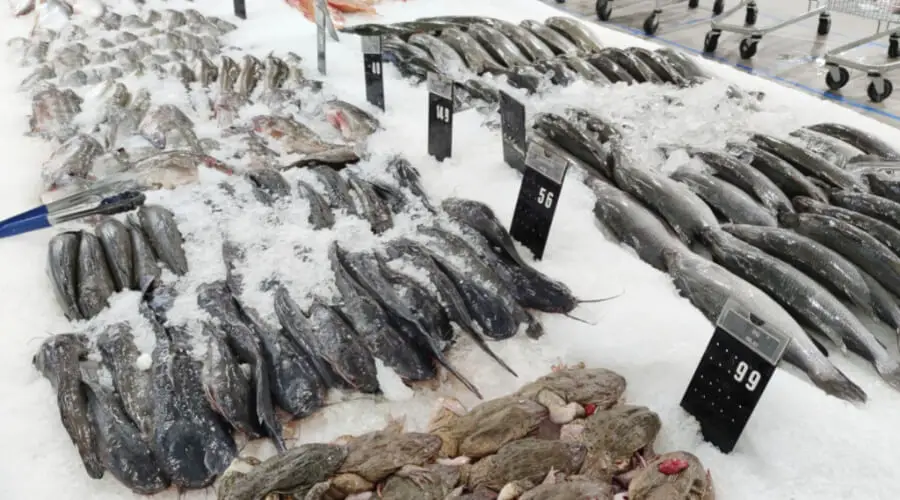The US commercial fishing industry has an annual revenue of about $5 billion and consists of more than 2,400 establishments. According to FAO, the united states is the fifth largest producer of fish in the world. This information is proof that commercial fishing is a lucrative business in the united states. You can join the industry and make fortunes selling fish. But what does it take to get into commercial fishing? In this post, we take you through the nitty-gritty of starting a commercial fishing business. Read on!
To get started in commercial fishing, you’ll need to understand market fragmentation and identify your target market, fishing tools and equipment, skilled staff, licenses, and fishing ground.
Market research is necessary before venturing into the fishing industry. You need to understand consumer behaviors and preferences and identify your target market. Identifying whom you want to sell to will make your next steps easily achievable. You will identify a niche in the wide industry, know the type of fish to catch, whether to venture into aquaculture or catch fish in their natural habitat and choose a suitable location for your business.visit for here
The Fishing Industry In US Statistics

The fishing industry in the US was growing rapidly over the five years leading to 2021. The coronavirus pandemic caused a decline in revenue as a result of a deadfall in demand. After the slow reopening, the industry experienced a rise in revenue by more than 1% in 2021. This is quite impressive considering hotels and restaurants (which are main consumers) are yet to reopen fully. Experts forecast steady growth in the fishing industry’s revenue going forward. Have a look at some key stats in the US fishing industry. These statistics will help you estimate and understand the size of the fishing industry.
Number Of Fishing Businesses In US: 55, 596
Average Profit Margin: 12% (fourth highest in us)
Industry Employment In The US: 169,950
Industry Products And Services: shellfish, finfish, other marine species, aquaculture.
Licensed Commercial Fishing Vessels: 25000-27000
Vessels Authorized To Operate In High Seas: 700+
Aquaculture Production: catfish 60%, crayfish 26% rainbow trout 8%
Mariculture: shellfish 90%, finfish 9%, marine shrimp 1%
Step By Step Guide To Establishing A Commercial Fishing Business

Establishing a new business can be mind-boggling when you don’t know how to go about it. This section takes you through the finer details of establishing a successful fishing business in the united states. Here are the steps to follow for you to succeed in the fishing industry:
1. Conduct market research
2. Choose a niche
3. Have a business plan
4. Get necessary funding
5. Establish the business and get all legal requirements
6. Hire professionals
7. Get the right equipment and tools
8. Market your business
1.Conduct Market Research
Before establishing any business, it is important to research the market. This research helps you understand how the market is segmented, customer patterns, global and domestic demand, and industry profitability. You can hire a professional to research and help you interpret the findings or do it yourself. Market research may be an added cost and time-consuming, but it’s worth the effort. Once you conduct research, you can venture into the business with clarity. For the fishing industry, market research will help you understand aquaculture and marine fishing. Find out the benefits and downsides of each before you venture. The findings of your research can also determine geographical location.
2. Choose A Niche
The USA’s fishing industry is vast, and you need to choose a niche for your business. Commercial fishing has five major sectors that you can choose from. These sectors are retailing, importing, seafood processing, harvesting, and wholesale distribution. You can choose a niche based on profitability, competition, cost structure, or market share concentration. Identifying your niche will help you proceed with a purpose since each niche has different logistics. As a guideline, a table shows the economic contribution of different sectors of the commercial fishing industry in the US. The data is according to the National marine fisheries service.
| Commercial Fishing Industry Sector | Contribution In Percentage |
| Retailing | 30% |
| Importing | 29% |
| Seafood processing and dealing | 23% |
| Harvesting | 12% |
| Seafood wholesale and distribution | 6% |
3. Have A Business Plan
After understanding the market and choosing an ideal niche for your business, it is time to get your business on paper. Have a detailed business plan that clearly states your goals and objectives. A business plan helps you roll out your business systematically and also helps potential investors understand your vision. Make sure your business plan is well-detailed and touches on all aspects of the business. Some of the key details you should include on the business plan are:
1. Executive Summary: this is a brief description of what is included in your business plan. Touch on every aspect of the plan in summary. The executive summary is crucial and should be made attractive to the reader. How you present this section will determine if a reader will proceed to read the whole plan
2. Company Summary: in this section, include crucial details of your company. Company name, vision, mission, list of directors, and policies are some of the things to include.
3. Products Or Services: expound on all the products and services that your company intends to deal with. To ensure your business plan is exciting, explain clearly and in detail about each commodity.
4. Summary Of The Market Analysis: this is the part where you elaborate on your market research findings. Include details of your target market that affect your business. You can touch on demographics, buying patterns, and competition.
5. Summary Of Strategy And Implementation: in this section, give reasons why you think your company will stand out from competitors, how you plan to market your products or services, and also your sales strategy
6. Financial Plan: potential investors and sponsors will keenly look at this section to make a decision. Ensure you include all necessary information and projected accounts. Make it as thorough as you can. You can consider getting an accountant to assist you to make it more appealing to investors.
4. Get Necessary Funding
After drafting a winning business plan, it is now time to get funding. Invest your owner’s equity first before pitching to investors. You can also approach financial institutions at this stage. If you plan to get funds from family and friends, share the plan with them. You can also try your luck at government grants that support new businesses.
5. Establish Your Business And Get All Legal Requirements
Register your business and obtain all the applicable permits. Legal requirements for the fishing business vary by state; enquire from your state to get exact details. Sometimes, you may need federal permits depending on your niche, boat size, and other variables. Getting these permits and licenses ensures you are running a legal business that is protected by law. If you plan to be exporting or importing, learning about the other country’s laws is necessary.
6. Hire Professionals
The size of your crew will be determined by the niche you choose. Preferably, hire professionals who have the tangible experience to help you achieve your goals. Share your vision with your staff and work together towards achieving them.
7. Get The Right Tools And Equipment
Depending on your niche, buy the right equipment ready to start your fish business. Invest in technology to take your business further much faster. You can benchmark with industry experts to know what equipment is urgent and what can be bought as you expand. The right equipment can set you apart and help you be in the lead.
8. Market Your Business
The way to get your business out there and reach your customers is through marketing. Choose affordable marketing methods as you start to keep your costs low. Ensuring you treat your staff well as their loyalty is a marketing strategy for you. Advertise your business until you are well established in your segment. You can choose to go for one main marketing strategy or incorporate different strategies to get diverse results.
Conclusion
The fishing industry in the united states is wide and cannot be too saturated to venture in. fishing business is lucrative and easy to run with the right exposure. Once you identify your niche, research properly to ensure you have the right market analysis data. Fishing is one of the industries with low entry barriers, and anyone can get in without much restriction.
Find your target market and come up with a viable business plan before you start. Ensure you walk with professionals throughout the journey. Establishing a professional business model goes a long way in maximizing your strengths. It also diminishes your weaknesses and helps you deal with potential threats before they arise. As with any other business, the sooner you start your commercial fishing business, the better. Starting soon will ensure you keep learning and growing. We wish you all the best in your new venture!

